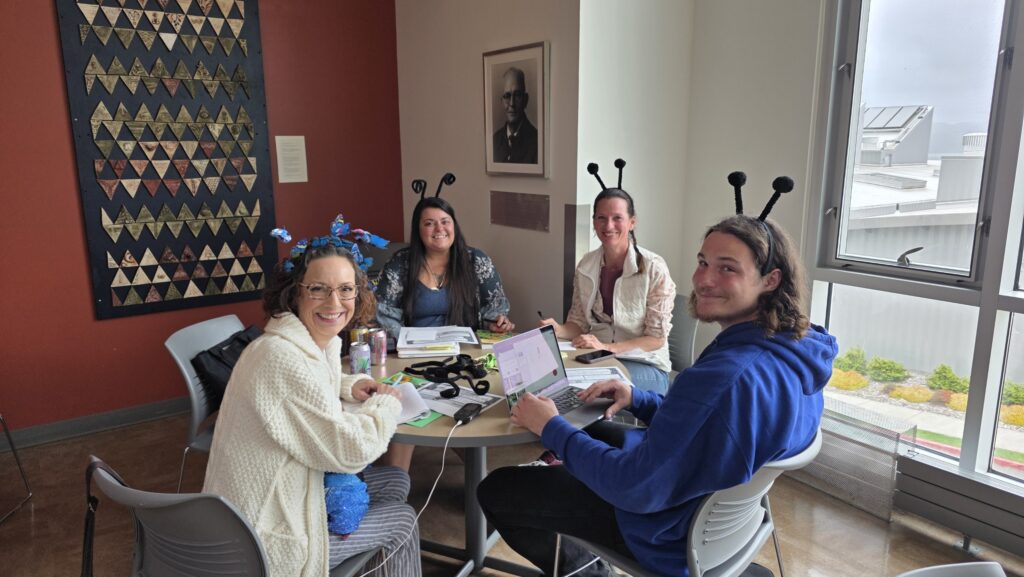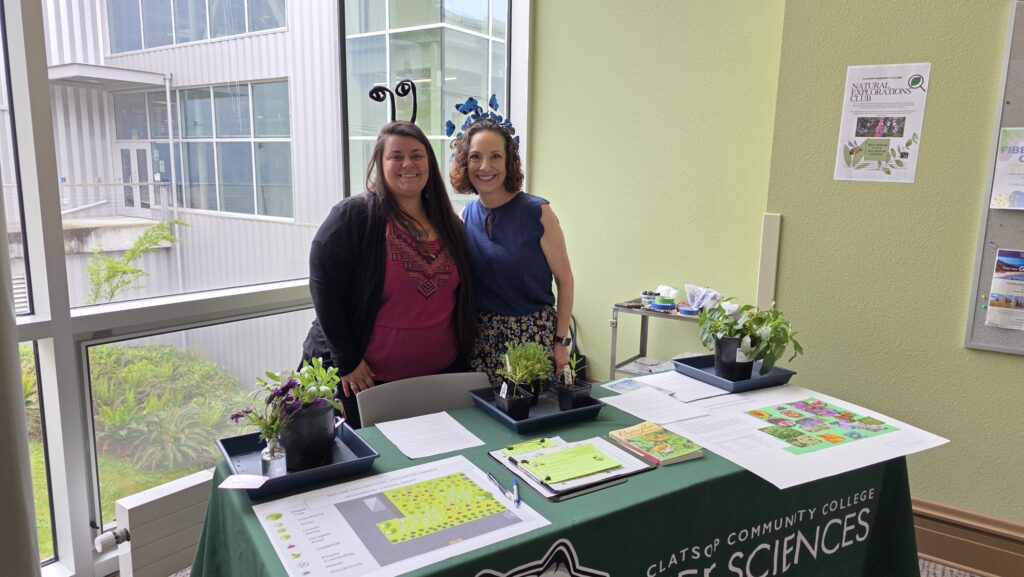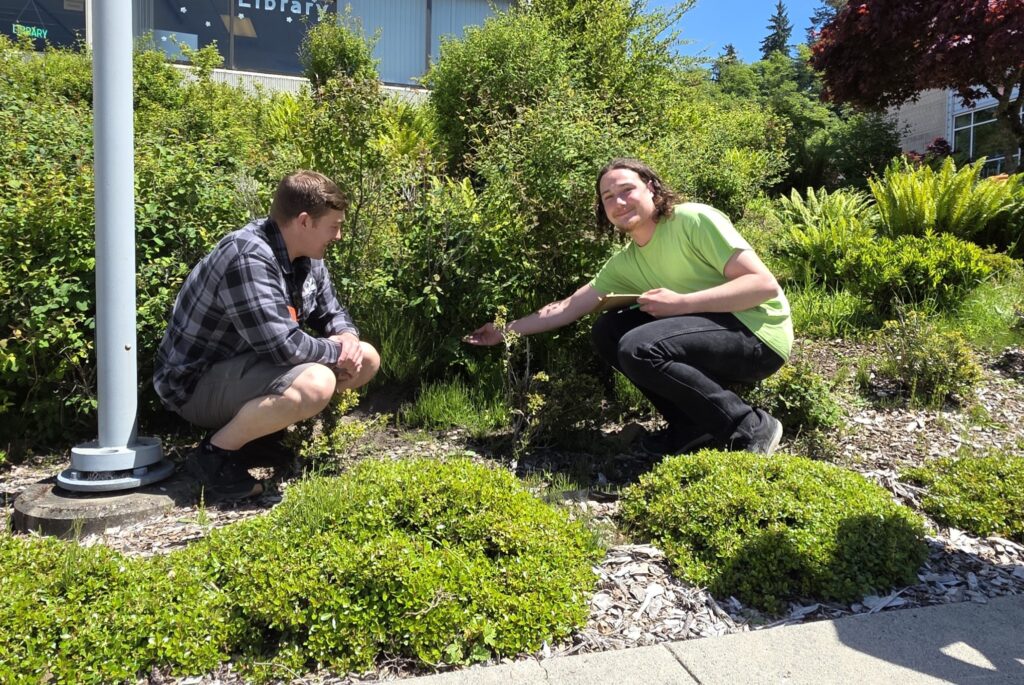A small but passionate group of Clatsop Community College students is making a big impact with the launch of the college’s first-ever pollinator garden. Spearheaded by the newly formed Natural Explorations Club, the project is a collaborative effort to enhance campus biodiversity, support pollinator populations, and create a space for learning and community engagement.
The Natural Explorations Club, led by students Flint Largin, Crystal Sager, and Therese Davis and advised by CCC science instructor Julia Mabry, was formed earlier this academic year. Initially sparked by a shared interest in mushrooms, the club quickly expanded its mission to explore a broader range of nature-based topics and activities.

“We live in a great area to have adventures in nature,” said Flint. “We began by talking about mushrooms, but we started having so many ideas about what we could do. This spring we even joined forces with the student government group and put seeds in plastic eggs for students to find during the egg hunt on campus. This spring we have mainly been busy making plans for a pollinator garden.”
The pollinator garden idea sprouted from CCC’s Botany class and science curriculum. Mabry, who teaches Biology and Ecology, wanted to create an on-campus opportunity for students to engage with topics like pollinator decline and invasive species. “There isn’t a public pollinator garden in Astoria. We will be the first one,” Mabry noted. “We found a great space in the middle of campus that has excellent visibility and a slope that accommodates burrowing insects.”
Joining the project is OSU Extension Office educator and environmental scientist Matt Solberg, who also teaches science courses as an adjunct instructor at CCC. Solberg has contributed his expertise to the club’s efforts, including a recent exhibit of invasive plants on campus, and is guiding the planning and implementation of the pollinator garden.
“The support we’ve received from CCC President Jarrod Hogue and the college’s facilities team has been incredible,” said Mabry. “They approved the location and have been behind this effort from the start.”
Preparation of the garden site is already underway. The club has begun weeding and evaluating existing plant life with Solberg’s help to determine what should remain, be relocated, or removed. This summer, they will solarize the soil using tarps to eliminate invasive weed seeds and prepare the ground for planting.

The garden’s design will focus on native and pollinator-friendly species such as goldenrod, pearly everlasting, and douglas aster. The club also plans to edge the garden with kinnikinnick, creating a natural buffer between the habitat and foot traffic.
“We’re very excited about the placement of our pollinator garden,” said Mabry. “This is creating a corridor pathway from the forest hillside that allows pollinators and other animals to have natural areas through a populated area.”
The CCC Pollinator Garden is shaping up to be a living laboratory for environmental education and a vibrant new feature for the campus community.
For more information about the Natural Explorations Club or ways to get involved in the pollinator garden project, please contact Julia Mabry at jmabry@clatsopcc.edu.



